
Chelidonium majus - Plant
(MRP Inclusive of all taxes)
- Shipping ₹79 for entire order
- Dispatch in 7 days
- Country of origin: India

(MRP Inclusive of all taxes)
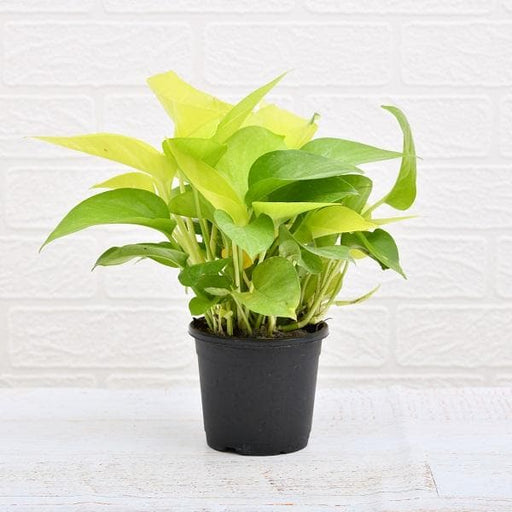 Save 29%
Save 29%
Air Purifier Money Plant with Pot The Air Purifier Money Plant, also known as Pothos or Epipremnum aureum, is a stunning indoor plant that...
View full details
 Save up to 15%
Save up to 15%
Peace Lily, Spathiphyllum - Plant The Peace Lily, scientifically known as Spathiphyllum, is a stunning houseplant celebrated for its elegant white...
View full details
 Save 25%
Save 25%
Jasminum sambac, Mogra, Arabian Jasmine - Plant Jasminum sambac, commonly known as Mogra or Arabian Jasmine, is a fragrant flowering plant...
View full details
 Save 18%
Save 18%
Combo Constituents Includes the Parijat Tree (Night-Flowering Jasmine), a culturally significant plant with fragrant flowers. Description The Pari...
View full details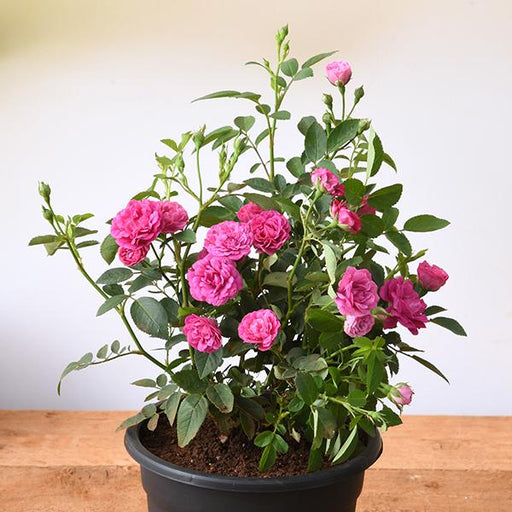
 Save 25%
Save 25%
Miniature Rose, Button Rose (Any Color) - Plant The Miniature Rose, also known as the Button Rose, is a charming and compact flowering plant that ...
View full details Save 25%
Save 25%
Damascus Rose, Scented Rose (Any Color) - Plant The Damascus Rose, also known as Rosa damascena, is a timeless symbol of beauty and romanc...
View full details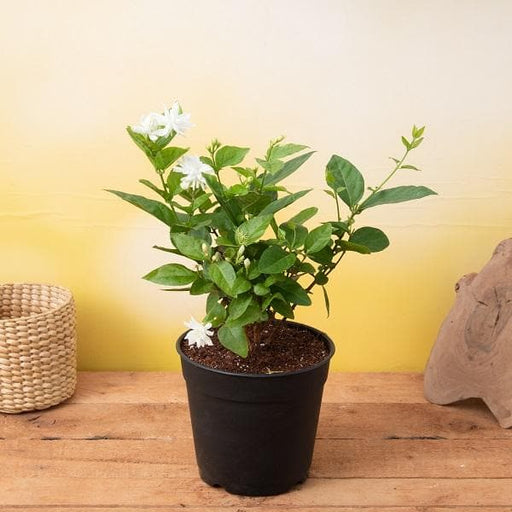
 Save 17%
Save 17%
Beautiful Fragrant Mogra, Arabian Jasmine Plant with Pot The Beautiful Fragrant Mogra, also known as Arabian Jasmine (Jasminum sambac), is...
View full details Save 15%
Save 15%
Pack of Vermicompost and Neem Cake for House Plants Transform your indoor garden with our premium Pack of Vermicompost and Neem Cake, spec...
View full details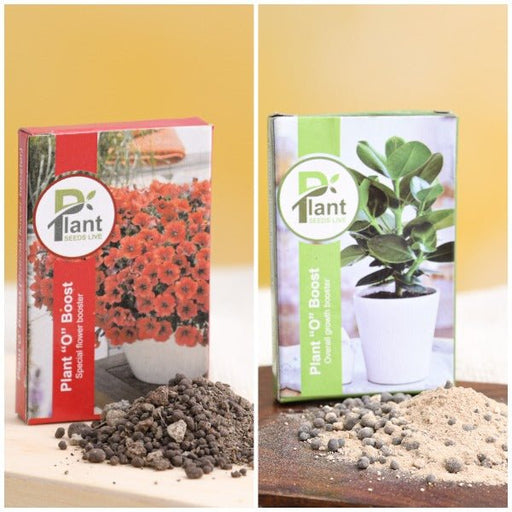
Pack of Plant Growth and Flower Boosters Unlock the full potential of your garden with our Pack of Plant Growth and Flower Boosters! This ...
View full details Save 38%
Save 38%
Combo of Jeevamrut and Neem Raksha for Easy Growth and Protection of Houseplants Transform your indoor garden with our exclusive combo of ...
View full details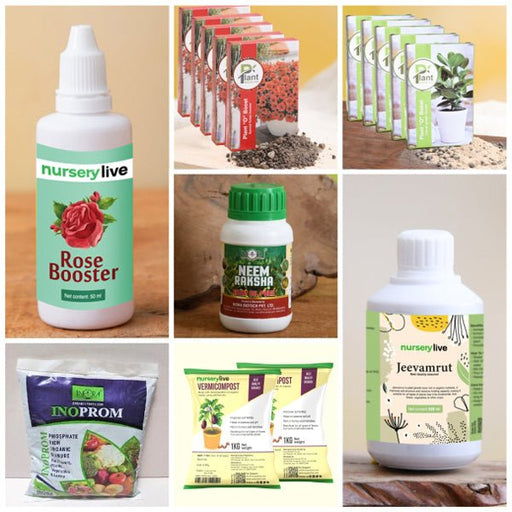 Save 22%
Save 22%
Plant Nutrients Kit (Pack of 16) for a Healthy Garden Transform your garden into a lush paradise with our Plant Nutrients Kit, featuring 1...
View full details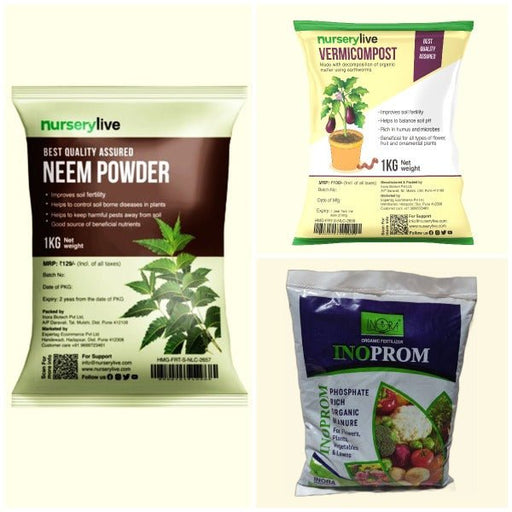 Save 16%
Save 16%
Combo of Top Plant Fertilizers Elevate your gardening game with our exclusive Combo of Top Plant Fertilizers, featuring two bags of premiu...
View full details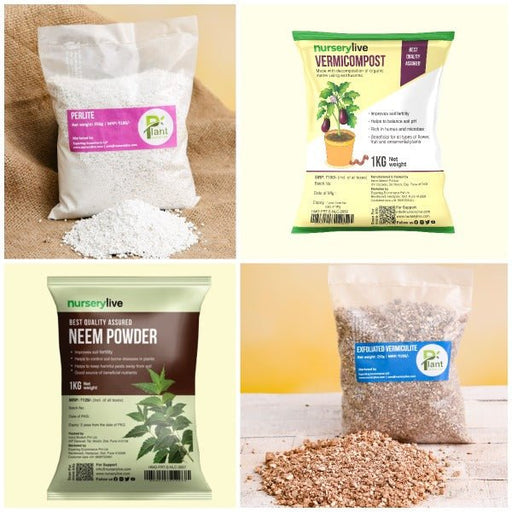 Save 24%
Save 24%
Pack of 4 Additives to Make Soil Healthy and Nutrient Rich Transform your garden into a thriving ecosystem with our Pack of 4 Additives de...
View full details Save 30%
Save 30%
Transform your gardening experience with our premium Combo of Perlite and Vermiculite. This unique blend is designed to enhance soil aeration and ...
View full details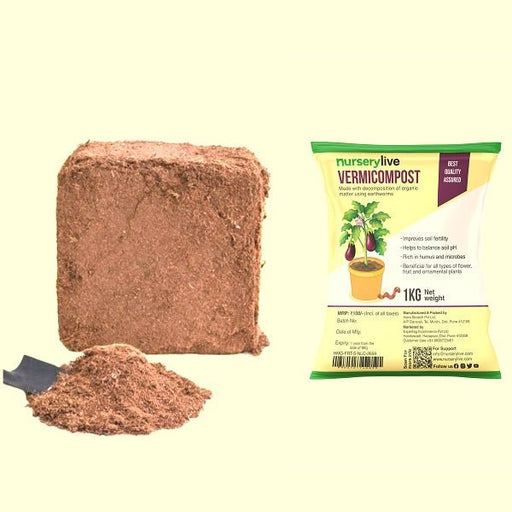 Save 27%
Save 27%
Combo of 2 Vermicompost and Cocopeat - Enrich Your Soil Naturally! Transform your garden into a thriving ecosystem with our Combo of 2 Ver...
View full details
 Save 35%
Save 35%
Best 6 Plants for Perfect Indoor Garden Transform your living space into a lush oasis with our curated collection of the Best 6 Plants for a...
View full details
 Save up to 50%
Save up to 50%
Mini Succulent Garden Pack Transform your space with our Mini Succulent Garden Pack, featuring a delightful collection of 4 any variety beautiful s...
View full details
 Save 30%
Save 30%
5 Best Fragrant Plants Transform your garden or indoor space into a fragrant paradise with our curated selection of the 5 Best Fragrant Plants. Th...
View full details
 Save 24%
Save 24%
Set of 2 Bonsai Looking Grafted Adeniums Transform your indoor or outdoor space with our exquisite Set of 2 Bonsai Looking Grafted Adenium...
View full details Save 45%
Save 45%
Top 4 Die Hard Succulents Pack Transform your indoor or outdoor space with our Top 4 Die Hard Succulents Pack, featuring a curated selecti...
View full details
 Save 30%
Save 30%
5 Best Indoor Plants Pack Transform your living space into a lush oasis with our '5 Best Indoor Plants Pack.' This carefully curated collection fe...
View full details
 Save 25%
Save 25%
Set of 4 Evergreen Air Purifier Plant Pack Transform your indoor space into a lush, green oasis with our Set of 4 Evergreen Air Purifier Pla...
View full details| SrNo | Item Name |
|---|---|
| 1 | Chelidonium majus - Plant |
Chelidonium majus, commonly known as Greater Celandine, is a perennial herbaceous plant belonging to the poppy family (Papaveraceae). Native to Europe and parts of Asia, this vibrant yellow-flowered plant is renowned for its medicinal properties and striking appearance. With its jagged, lobed leaves and bright yellow sap, Chelidonium majus has been utilized in traditional medicine for centuries, particularly for liver and gallbladder ailments.
What makes Chelidonium majus special is its rich history in herbal medicine, dating back to ancient Greece, where it was used to treat various ailments. Its unique alkaloids, such as chelidonine and sanguinarine, contribute to its therapeutic effects, making it a valuable addition to herbal remedies. This plant not only serves medicinal purposes but also attracts pollinators, enhancing biodiversity in gardens and natural habitats.
One of the standout features of Chelidonium majus is its ability to thrive in shaded areas, making it an excellent choice for woodland gardens. Its bright yellow flowers bloom in spring and early summer, providing a burst of color when many other plants are still dormant. Additionally, the plant's sap has been historically used as a natural wart remover, showcasing its multifaceted uses.
This plant is like the Swiss Army knife of herbal remedies. Known for its potential to treat various ailments, from liver issues to skin problems, Chelidonium majus is a natural multitasker. Imagine a tiny green superhero, swooping in to save the day with its anti-inflammatory and analgesic properties. It’s like having a personal health assistant that doesn’t require a salary or coffee breaks!
If you think this plant is just a pretty face, think again! Chelidonium majus has a plethora of uses, from traditional medicine to modern herbal concoctions. Whether you’re brewing a tea or crafting a tincture, this plant is ready to lend a hand. It’s the ultimate DIY herbalist’s dream, making you feel like a wizard in your own kitchen.
Every rose has its thorn, and Chelidonium majus is no exception. While it boasts impressive benefits, it can also cause some unwanted side effects. Think of it as that friend who’s fun at parties but tends to overstay their welcome. Mild digestive issues or skin irritation can occur, so it’s wise to tread carefully and consult a professional before diving in.
Want to grow your own herbal superhero? Chelidonium majus is relatively easy to cultivate, making it a gardener’s delight. With a penchant for shady spots and moist soil, this plant thrives in the right conditions. Just think of it as the introverted cousin of the garden—perfectly happy in the background, quietly doing its thing while you take the spotlight.
This plant has a rich history that dates back centuries, making it the wise old sage of the herbal world. Used by ancient civilizations for its medicinal properties, Chelidonium majus has seen it all. It’s like the grandparent who tells stories of the good old days, reminding us of the timeless wisdom found in nature.
If your liver could talk, it would probably sing praises for Chelidonium majus. This plant is often associated with liver health, acting as a detoxifying agent. It’s like a gentle cleanse for your insides, helping to keep your liver happy and functioning. Who knew a plant could be such a good friend to your organs?
Step aside, modern medicine; Chelidonium majus has been a staple in traditional healing practices for ages. Used in various cultures for its therapeutic properties, this plant is a testament to the power of nature. It’s like the wise old doctor who’s been around long enough to know what works—no fancy degrees required!
Extracts of Chelidonium majus are like the concentrated essence of this plant’s goodness. Whether in tincture or capsule form, these extracts pack a punch, delivering the benefits of the plant in a convenient package. It’s like having a little bottle of magic that you can carry around, ready to unleash its powers whenever needed.
Move over, commercial skincare products; Chelidonium majus is here to save your skin! With its potential anti-inflammatory and antimicrobial properties, this plant can be a game-changer for various skin issues. It’s like having a natural beauty guru at your disposal, ready to help you achieve that glowing complexion without the harsh chemicals.
If your tummy is feeling a bit off, Chelidonium majus might just be the herbal remedy you need. Known for its potential to aid digestion, this plant can help soothe an upset stomach and promote overall gut health. It’s like a gentle hug for your insides, reminding you that sometimes, nature knows best.
In the world of herbal remedies, Chelidonium majus is a star player. Its versatility makes it a favorite among herbalists, who appreciate its wide range of applications. Whether you’re looking to create a soothing salve or a revitalizing tea, this plant is ready to step into the spotlight and show off its talents.
Chelidonium majus, also known as greater celandine, is a perennial herb that boasts bright yellow flowers and a penchant for shady spots. This plant is like the introverted artist of the botanical world—beautiful yet elusive, often found in neglected gardens or along roadsides, quietly working its magic.
This plant is a natural remedy powerhouse! Traditionally, Chelidonium majus has been used for liver ailments, gallbladder issues, and even skin conditions. Think of it as the herbal superhero, swooping in to save the day with its anti-inflammatory and analgesic properties, all while keeping things natural and green.
While Chelidonium majus has its fans, it’s not a one-size-fits-all solution. Pregnant or nursing women, as well as those with liver disease, should steer clear. Always consult a healthcare professional before diving into the herbal pool—better safe than sorry, right
Using Chelidonium majus is like crafting a potion! You can brew it into a tea, create tinctures, or apply it topically. Just remember, moderation is key; too much of this herbal delight can lead to unwanted side effects. So, channel your inner alchemist wisely!
Look no further than your local wildflower patch or garden center! This plant thrives in shady, moist areas, often popping up in unexpected places. Just be sure to ask permission before foraging—plants have feelings too!
Absolutely! Chelidonium majus is like that friend who thrives in low-maintenance environments. Plant it in a shady spot with well-drained soil, and watch it flourish. Just remember, it can be a bit of a spreader, so keep an eye on its wanderlust tendencies!
While Chelidonium majus is a herbal darling, it can have a few party crashers. Side effects may include stomach upset, skin irritation, or even liver toxicity in high doses. Always start small and listen to your body—no one likes an uninvited guest!
Many herbal enthusiasts swear by Chelidonium majus for liver health, claiming it helps detoxify and support liver function. However, scientific evidence is still catching up. Think of it as a supportive sidekick rather than the main hero—always combine it with a balanced diet and lifestyle!
Chelidonium majus stands out in the herbal crowd with its unique properties. While other herbs may focus on one area, this plant offers a buffet of benefits, from liver support to skin healing. It’s like the multi-talented friend who can sing, dance, and cook!
Yes, indeed! Chelidonium majus has been used topically for various skin conditions, including warts and eczema. Just remember to do a patch test first—nobody wants a surprise reaction. It’s like dating; you want to know if you’re compatible before diving in!
The best time to harvest Chelidonium majus is during its flowering season, typically in late spring to early summer. This is when the plant is bursting with vitality and medicinal compounds. Just be sure to leave some behind for the bees—sharing is caring!
Chelidonium majus can be a bit of a garden gatecrasher! While it’s not classified as highly invasive, it can spread quickly in the right conditions. If you’re not careful, it might just take over your garden party. Regular maintenance is key to keeping it in check!